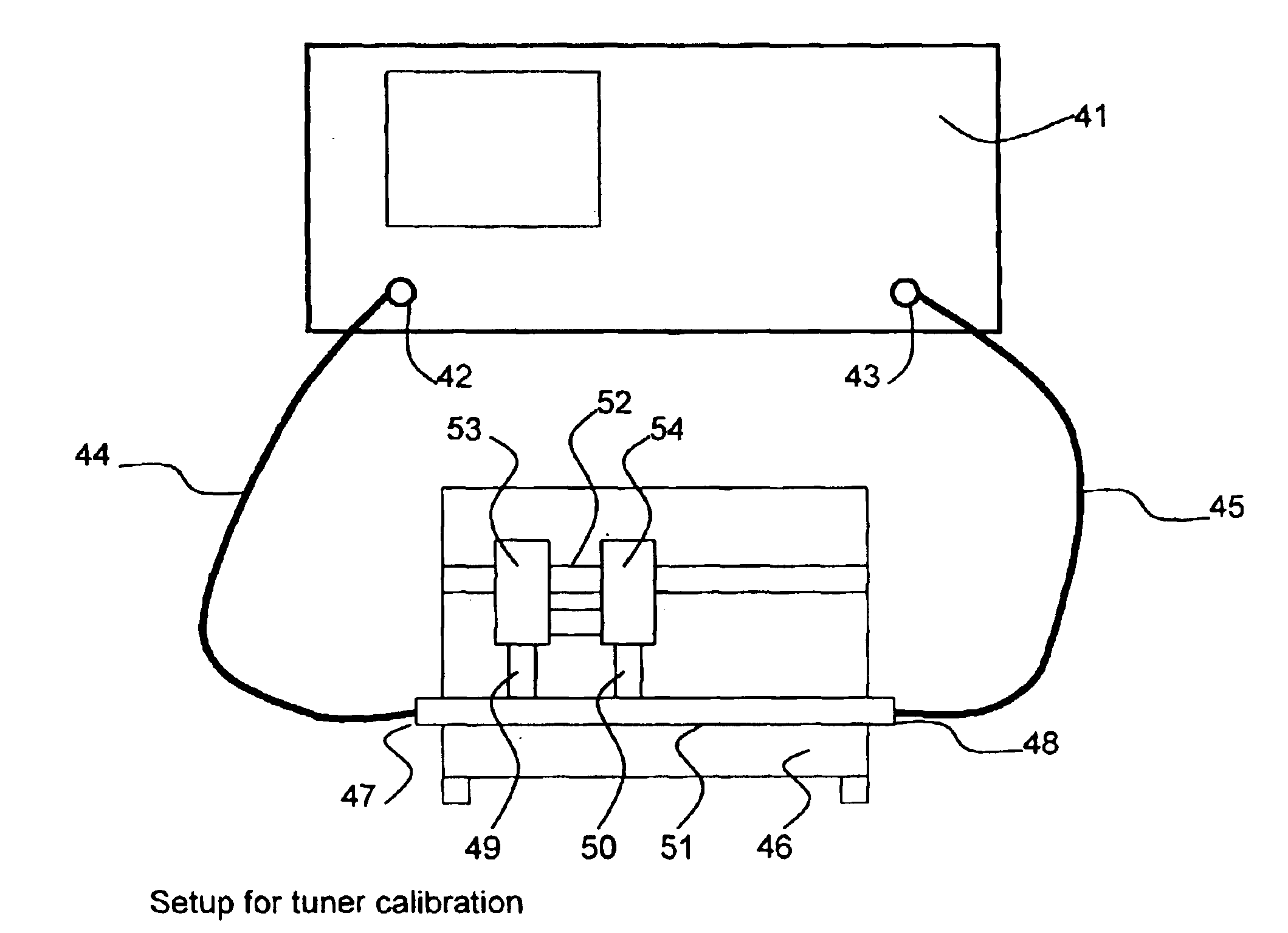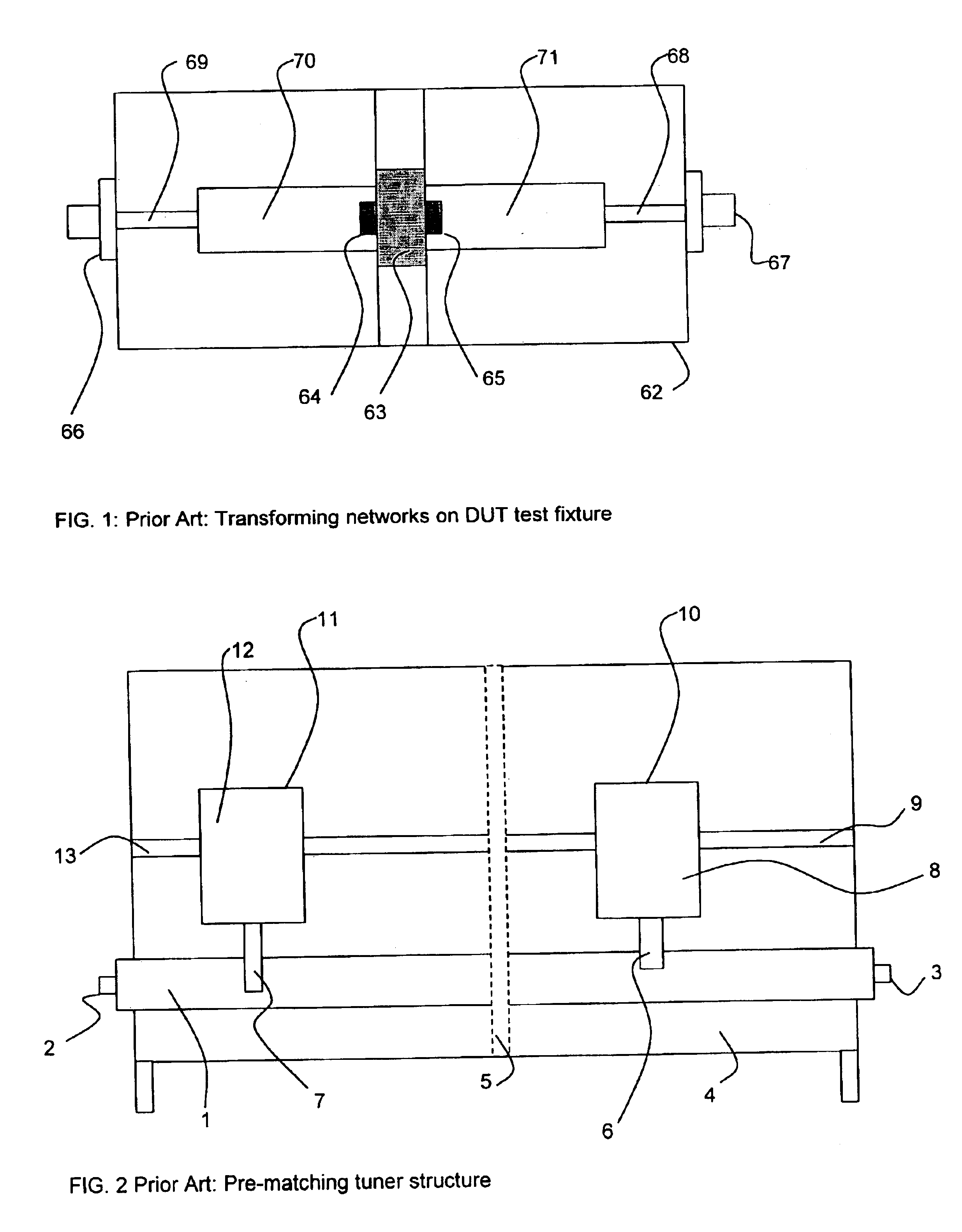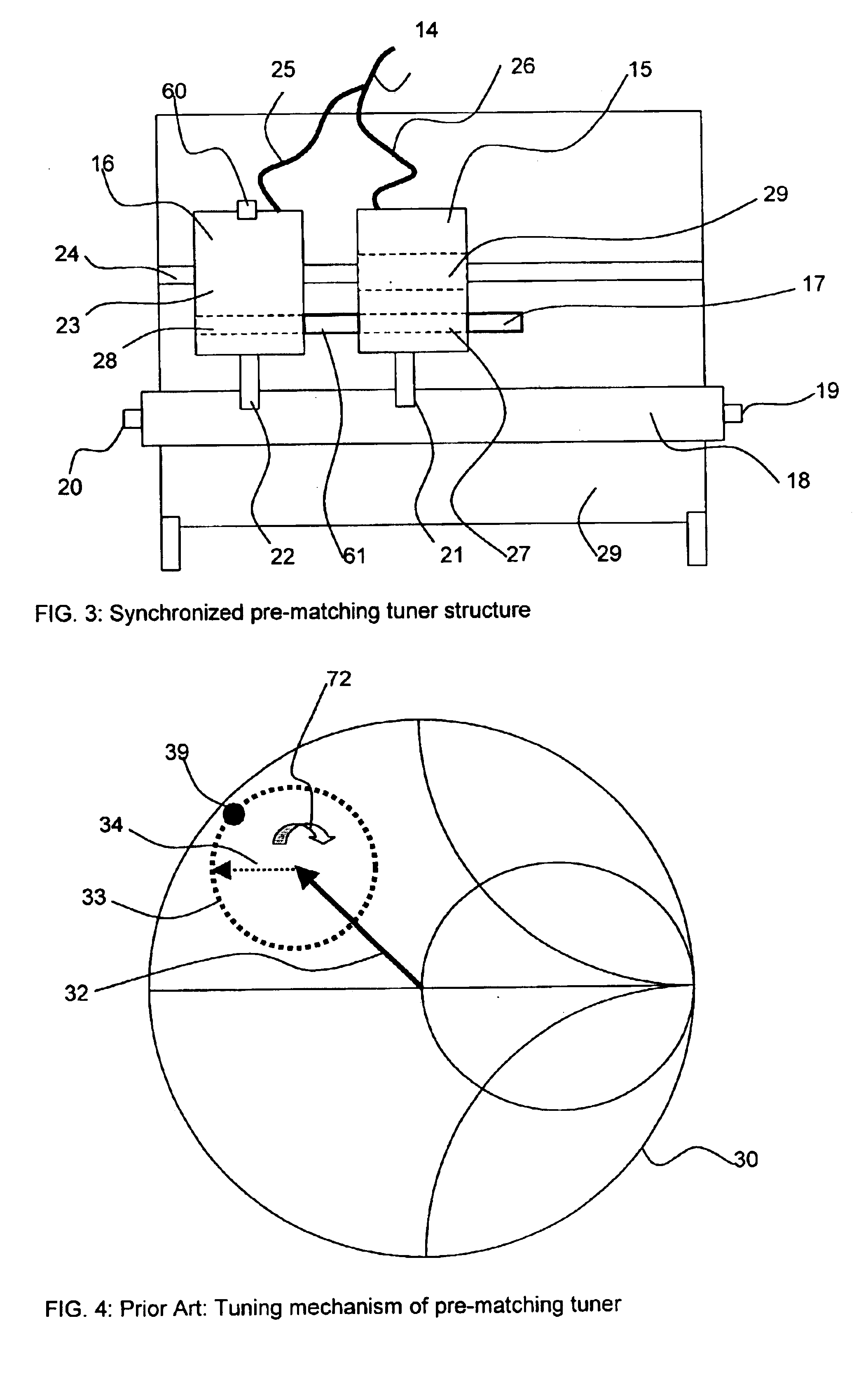Microwave tuners for wideband high reflection applications
a wideband, high-reflective technology, applied in the direction of measuring devices, instruments, electrical measurements, etc., to achieve the effect of high reflection capability
- Summary
- Abstract
- Description
- Claims
- Application Information
AI Technical Summary
Benefits of technology
Problems solved by technology
Method used
Image
Examples
Embodiment Construction
This invention is described in the following with reference to the FIGS in which like numbers represent the same or similar elements:
We propose controllable microwave tuners, which include two or more RF slugs, connected in series in the same airline (or slabline for practical applications), (FIG. 3). The main difference to existing pre-matching tuners (FIG. 2) consists in the different way of controlling the position and the RF operation of the RF slugs (21,22), included in the new tuners (29). Instead of moving the two (or more) RF slugs (6, 7) in tuner (4) independently, the pre-matching slug (7) being positioned before the actual tuning with slug (6) starts, the new tuners (29) control both RF slugs (21,22) both horizontally and vertically simultaneously. This has a major effect on the RF behavior of the new tuners (29): Instead of covering only a small section of the Smith Chart at high reflection, (dotted circle (33) in FIG. 4, FIG. 7), the new tuners cover the entire Smith Ch...
PUM
 Login to View More
Login to View More Abstract
Description
Claims
Application Information
 Login to View More
Login to View More - R&D
- Intellectual Property
- Life Sciences
- Materials
- Tech Scout
- Unparalleled Data Quality
- Higher Quality Content
- 60% Fewer Hallucinations
Browse by: Latest US Patents, China's latest patents, Technical Efficacy Thesaurus, Application Domain, Technology Topic, Popular Technical Reports.
© 2025 PatSnap. All rights reserved.Legal|Privacy policy|Modern Slavery Act Transparency Statement|Sitemap|About US| Contact US: help@patsnap.com



